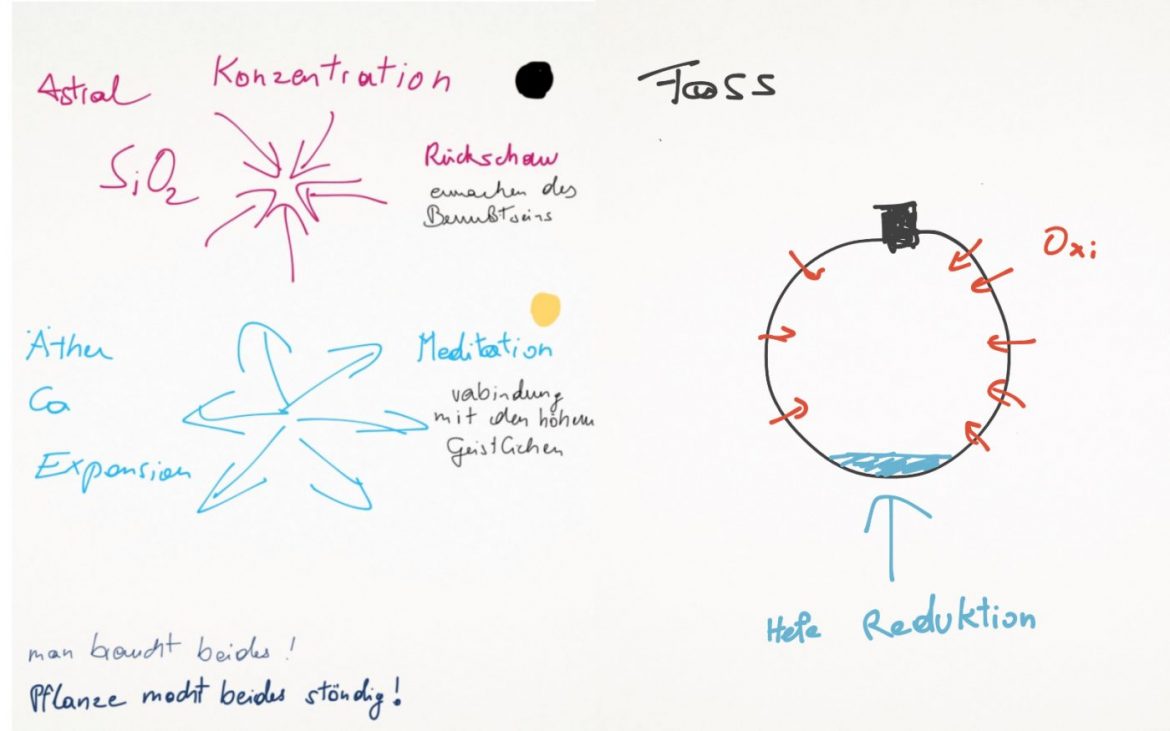Reduction and Oxidation in Wine
Written by Franz Weninger on the 14th of March 2017The Power of Reduction and Oxidation in Wine: Better Understanding the Reductive Strength or Anti-oxidative Power in Wine
When we switched to working our soil according to organic principles, what we observed was an increase in the reduction potential of our wines. This was back in 2005 to 2007, when we, as well as our customers, had to learn about this topic. Also about the topic of bottle closures - see our FAQs.
Sadly, wine science around the globe does not go very in-depth on these topics as every wine and every soil acts differently and a small change (foliage treatment) in the vineyard can have a tremendous impact. This means that it is up to the wine grower to experiment.
Lees and slow-growing vines producing thick-skinned grapes are the sources of reductive strength. Reduction can make a wine ageable for centuries, like Burgundian wines.
The taste of "minerality“, "liveliness“ or whatever you may want to call it are best preserved by reduction. In fact, reduction in wine is often interpreted as minerality. These two characteristics have a lot in common. Both are the result of vineyard work and spontaneous fermentation.

Franz Weninger
What increases reduction potential in wine?
-
Living soils and slow-growing vines are the most important role players in natural wine. Grapes from such sites are very stable and have a high reduction power, so you can even obtain minerality from loamy soils.
-
Soils with lower oxygen levels (loamy soils) produce grapes with more resveratrol (and a more violet colour) and so contain more reduction strength.
-
A long contact period with the lees (which forms a connection to the birth of the wine) keeps the wine youthful.
-
Oxidation. It might sound strange but oxidation at a certain time (for example in a barrel during malolactic fermentation) will lead to more reduction power later in the wine. You can find more information in Clark Smith´s „Postmodern Winemaking“.
-
Different closures have different effects on oxygen permeability. My article on this topic.
-
The biodynamic view on this topic is that reduction is connected to concentration. Symbol for the days getting shorter after the longest day (21st of June), new moon.
Increase of Oxidation in Wine
-
Open soil (oxygen in the soil of the vineyard), and therefore, decreased living in the soil. There are interesting question for us here: where is the limit, what amounts of natural herbs and grass can the vine stand against, how low can the yield drop? This is more a question of finance, but one that is crucial for winemaking. Just consider the natural winemakers around the world: nearly nobody had to invest, most of them inherited the vineyards and winery from the previous generation. I know this is a difficult topic to talk about, but a very interesting one too.
-
Grapes hanging in the sun.
-
Adding of cultured yeast, yeast food, enzymes.
-
Filtration always increases oxidation, the removal of the lees will steer the wine into the direction of oxidation.
-
Small barrels (the surface to volume ratio is important)
-
Biodynamic symbols for expansion: spring stands for expansion in the vineyard, and the mirror of the sun (growth in the night), the full moon.
What I learnt so far:
We can use this reductive strength to make wines without sulphur (we even had to decrease sulphur, otherwise the wine would be undrinkable for ten years because of reduction).
Wines with this power need time. Time to age, time to develop in the glass, basically time to develop taste. Time for understanding.
We need reduction in natural winemaking as it is one of the great gifts that nature provides, making wine unique among beverages.
Our goal is to strike a balance between these two reactions in wine. We need both of them. A balanced vineyard, correct soil cultivation, and cover crop management will produce balanced grapes in terms of skin thickness and nutrition in the grapes. With such grapes these two reactions will happen in the barrel all on their own.